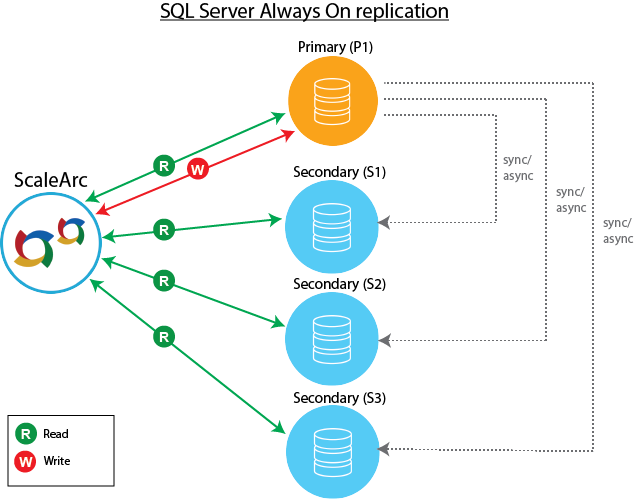ScaleArc supports a number of topologies, which include the following:
P2P transactional replication

SQL mirroring
SQL mirroring maintains two copies of a single database on different server instances of the SQL Server. This setup, when invoked, initiates database mirroring between the server instances. Typically, the server instances reside on computers in different locations.
Database mirroring supports only one primary server (also called a principal server), one mirror server, and an optional witness server.

The primary server (P1) serves the database to the clients. The other instance (Mirror M1) acts as a hot or warm standby server, depending on the configuration and state of the mirroring session. If the database mirroring session is synchronized, database mirroring provides a hot standby server that supports rapid failover without a loss of data from committed transactions. When the session is not synchronized, the mirror server is typically available as a warm standby server, but with possible data loss.
SQL mirroring supports three operational modes: high-performance, high-safety, and transaction safety. The high-safety mode includes the witness server.
Always On
ScaleArc supports SQL Server's Always On configuration and leverages the latter's failover management system. ScaleArc actively monitors roles of each replica associated with the configured availability group and reflects the state change on its dashboard.


Comments